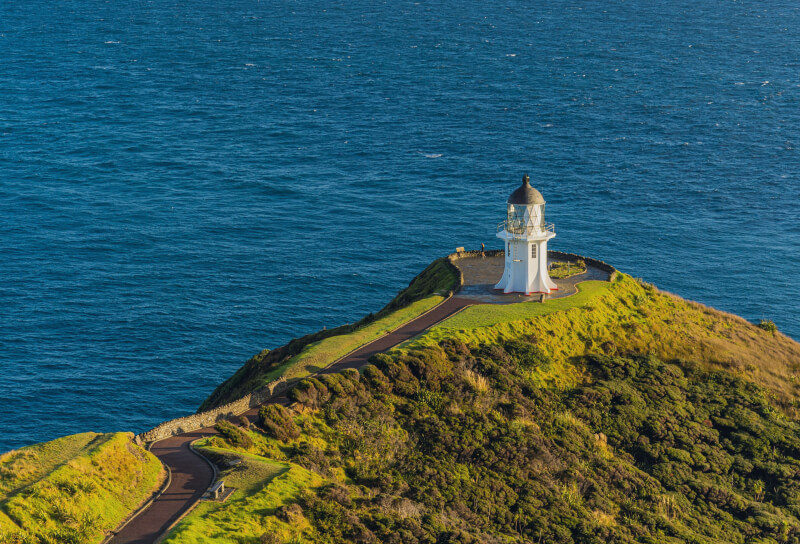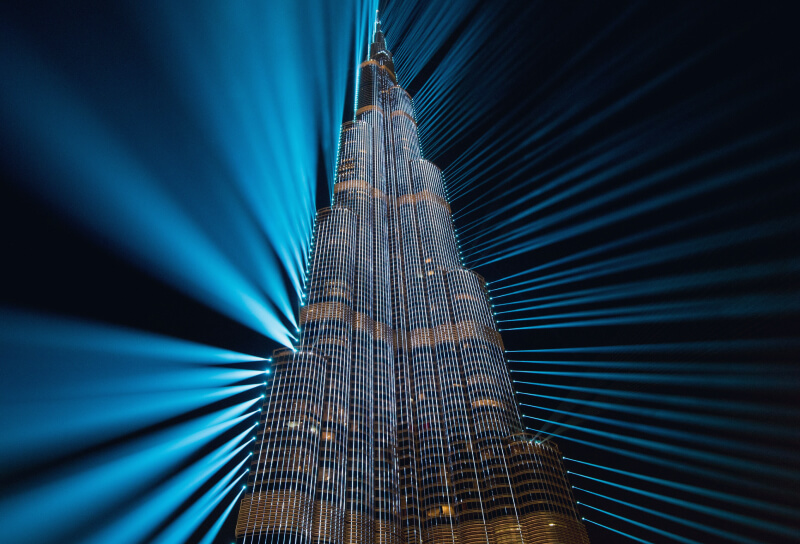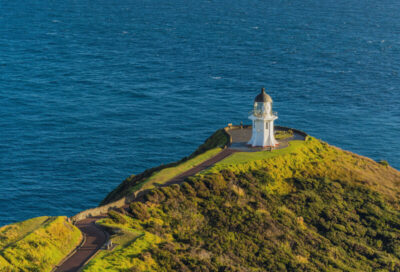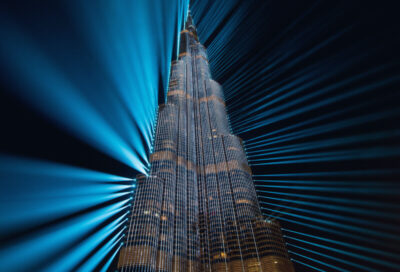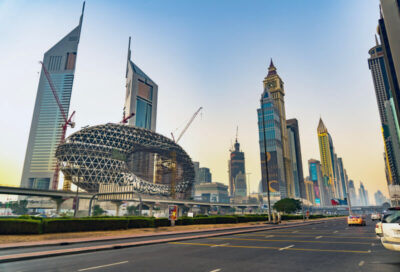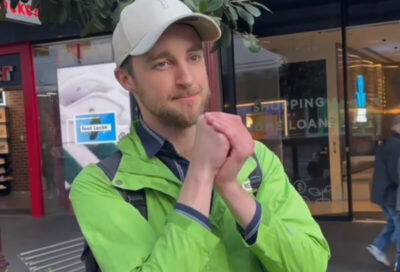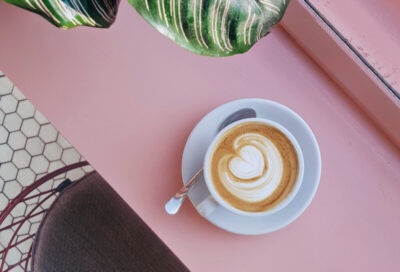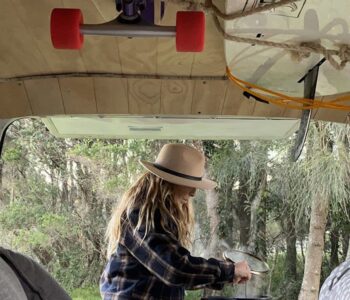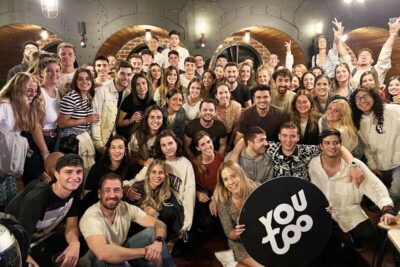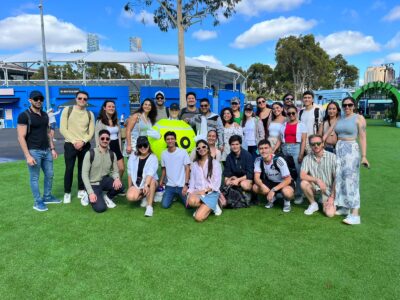Sídney
The city of a hundred beaches
Sídney es la ciudad más grande y emblemática de Australia, ubicada en la costa este del país y capital del estado de New South Wales. Es un destino lleno de oportunidades académicas y laborales para estudiantes internacionales. En esta ciudad encontrarás la mejor combinación entre rascacielos modernos, parques naturales, bahías pintorescas y playas de ensueño. ¿Quieres estudiar y trabajar en Sídney? ¡Te contamos todos sus secretos!
When you think of Australia, three things inevitably come to mind: a koala, a kangaroo and the Sydney Opera House. And, with almost 5 million inhabitants, Sydney – Sydney in English – is, in fact, the most recognized and populated city in Australia, as well as the capital of the state of New South Wales.
Pros and cons of living in Sydney
Advantages of Sydney
- You will always have some new and attractive plan waiting for you: from going on a hike or meeting for a brunch to simply going for a good coffee. There are thousands of things to do!
- Es una de las ciudades del mundo con más playas. ¡Hay más de cien! Encontrarás la playa ideal para todo tipo de actividades: surfear, hacer snorkel o, simplemente, relajarte haciendo una barbacoa con amigos.
- There are many job offers and students usually find I work quite easily. City salaries tend to be higher!
- Sydney was built on one of the most beautiful bays in the world. In addition, it is also famous for having two other of the most famous icons of the country, the Harbour Bridge and Bondi Beach.
- It is very well connected to other cities in the country and allows Sydneysiders to combine life from the big city with the tranquility of the beach.
- It is a place where people from dozens of different countries come together to create an incomparable multicultural city.
Cons of Sydney
- Everyone wants to live in this wonderful city, so the city will always be full of people and movement.
- It is an expensive city, although it should be noted that it is extremely easy to get used to.
- The traffic is truly crazy. Bus drivers drive very badly, they never arrive on time and, if you don't stop them, they won't either. Pay attention to the traffic lights! They change color in a matter of seconds.
- In Sydney there are many sloping streets and it will be difficult for you to get around by bike.
- The rains are regular, sudden, and are usually accompanied by wind. Nothing a raincoat can't fix!
Where is Sydney located?
Sídney se encuentra en el estado de New South Wales (o Nueva Galés del Sur, en castellano plano). Sospechamos que después de leer este dato te has quedado prácticamente igual de perdido que antes, así que vamos a decirlo de forma más clara para que todo el mundo lo entienda: Sídney está abajo a la derecha en el mapa.
En el siglo XX, Melbourne y Sídney disputaban por convertirse en la capital de Australia. Y el debate no parecía tener un claro ganador. Por esta razón, para evitar que la discusión se prolongase aún más, se eligió una ciudad diferente que estaba a medio camino entre ambas: Canberra. No obstante, durante este siglo, se produjo una modernización en la infraestructura urbana de Sídney. Este hecho hizo que gentes de innumerables y diversos países acudieran a la ciudad en busca de una vida mejor, de ahí su carácter multicultural.
Además, en el año 2000, la ciudad obtuvo toda la atención a nivel mundial cuando acogió una de las ediciones de los Juegos Olímpicos más relevantes de la reciente historia. Ya hemos dicho que Sídney es uno de los símbolos más reconocibles de Australia… ¡y la verdad es que no le faltan razones!
Weather in Sydney
Australia is located in the southern hemisphere, which means that the seasons of the year go the opposite way than in Europe or America. When it is summer in Europe, it is winter in Australia and vice versa. Although you probably already knew this.
When we think of Australia, heat, sun and summer come to mind all year round. But the truth is that it is not exactly like that. The temperature in Sydney can vary drastically from night to morning. You may wake up on a sunny day and in the afternoon there will be one of those downpours to remember.
Sydney's climate is oceanic, we could describe it as humid subtropical, with mild summers and somewhat cold winters. Its proximity to the sea means it has moderate temperatures and in summer the feeling of heat is accentuated due to the humidity. There are days when you think you are going to melt from the heat!
And on rainy days, often unexpected, forget the umbrellas! When it rains, it is usually accompanied by a strong wind, so if you don't want to get soaked and be left with a broken umbrella, it is best to always carry a raincoat with you.
Summer
From December 1 to the end of March.
It is characterized by having very hot days and unpredictable, brief but intense afternoon rains. Of course, during the summer the barbecues in The beach is continuous and there is a lot of activity in the city. Summer is the time when most tourists visit the city.
The month of January is the hottest, with temperatures that can exceed 40 degrees.
Otoño
Del 1 de abril a finales de mayo.
En marzo empieza a llegar el frío y, con él, el otoño. Aunque la temperatura empieza a descender, el clima es muy agradable. Hay algunos días de lluvia, pero muchos otros con un sol intenso al mediodía que invitan a ir tanto a la playa como a la montaña.
Winter
Del 1 de junio hasta finales de agosto.
Al contrario de España, el invierno empieza en el mes de junio, y durante tres meses el frío es el protagonista de la ciudad. Con unas temperaturas mínimas medias de unos 8 grados, los días son cortos y las noches más largas. El viento proveniente del Ártico crea una sensación térmica un tanto fría. Aun así, los días son soleados y perfectos para salir a caminar.
El mes de julio suele ser el mes de más frío del año, con temperaturas alrededor de los 2 grados. Sin embargo, ¿sabías que en Sídney solo han visto nevar una vez? Y fue en el 1836.
Y no te preocupes por el surf, debes saber que podrás practicar el deporte por excelencia australiano durante todo el año. ¡En Sídney siempre hay surfistas en el agua!
Spring
Del 1 de septiembre hasta finales de diciembre.
El clima durante primavera es sensacional. Perfecto. La lluvia no es la protagonista y la temperatura es suave, con mañanas algo frescas y tardes un poco más calurosas. Muchos australianos y extranjeros empiezan a ir a la playa a tomar el sol y darse su primer chapuzón de la temporada. A todo esto, las calles se tiñen de color violeta debido a los árboles jacaranda.
How to get around Sydney
Con la tarjeta Opal Card podrás moverte con facilidad en autobús, tren, ferri y en todos los transportes públicos de la ciudad. Hacerse la tarjeta es gratis y podrás recargarla en muchos puntos de la ciudad. El precio mínimo es de 2,24 AUD por un trayecto corto, pero siempre va en función de la distancia recorrida y de si es hora punta o no (peak fare or off-peak fare). Ten en cuenta que a partir del octavo viaje semanal, el noveno te saldrá a mitad de precio. ¡Ah! Los sábados, domingos y public holidays (festivos), hagas los viajes que hagas no pagarás más de 9,35 AUD.
Por otro lado, Uber es el servicio de moda en la ciudad. ¡Y razones no le faltan! Por si no lo conocías, Uber es un servicio similar a los taxis, pero más barato. Busca la aplicación, descárgatela en tu smartphone y úsala cada vez que llegues tarde para salir del apuro. El chófer te vendrá a buscar allí donde estés y, lógicamente, te llevará a donde quieras.
Una alternativa australiana a Uber es DiDi, disponible en 28 ciudades del país.
The best neighborhoods to live in Sydney
One of the most common questions among newcomers to Sydney, or among those who are seriously considering going to live there, is: «what are the best areas to live in Sydney?».
We answer your question:
- The center: The CBD is what we know as the Center Business District. There is no There is a lot of accommodation available and what there is is usually a bit expensive. Of course, if you live there you will be in the very center of Sydney.
- Darlinghurst: It is one of the closest neighborhoods to the city. There are many cafes, restaurants and clubs. It is a good area to live and prices range between 200-300 AUD per week for a single or shared room.
- Surry Hills: está pegado al barrio de Darlinghurst y, por lo tanto, comparte características similares. Tiene zonas con mucho ambiente y otras más residenciales.
- Pyrmont & Ultimo: estos dos barrios se encuentran al oeste del CBD. Son barrios con muchos estudiantes. En Ultimo hay bastantes personas de origen asiático. Dispone de supermercados, bares y está bien comunicado con varios autobuses y trenes. Los precios rondan los 180-220 AUD semanales por habitación compartida.
- Redfern & Chippendale: están al sur del CBD y también son barrios con muchos estudiantes. Están bien comunicados y cerca de la ciudad. Los precios son muy similares a los de Pyrmont y Ultimo.
- Glebe: It is a neighborhood with very good energy. Many cafes and restaurants, and every Saturday there is a market, one of the most famous in the city. A single room can cost around 265 AUD per week.
- Newtown: es el barrio underground por excelencia de la ciudad. Está más alejado de la playa, pero siempre hay cosas que hacer. Tiene muchas tiendas de segunda mano y cafés muy recomendables. El alquiler ronda entre los 220-280 AUD por semana.
- Bondi Beach: It is the most famous beach in Sydney, and rental prices in this area increase significantly in the summer season. A shared room ranges from 200-250 AUD and a single room from 250 AUD to 400 AUD per week.
- Bondi Junction: is 10 minutes by bus from Bondi Beach. It is the area where the neighborhood's shopping centers and supermarkets are located. It is close to the train station and a large bus station. Prices are very similar to Bondi Beach.
- Coogee: is another beach area where there are always things to do. It is quieter than Bondi, but in summer a lot of people also gather. It is well connected with several buses that go to the city and other beach areas.The rental price is between 220 and 370 AUD per week.
- Maroubra: This beach area is one of the quietest, but it is one of the furthest from the city (about 40 minutes by bus). Prices are around 200 to 300 AUD per week for a single room.
- Manly: el barrio de Manly se encuentra en el otro lado de la bahía de Sídney. Hay restaurantes, bares, cafés y una gran playa para surfear. Si vives en Manly, no te vas a mover de allí. La mejor forma de ir a la city es en ferry y los precios oscilan entre los 200-300 AUD por semana (todo cambia según la temporada).
Find out about all the events
We have compiled a compilation of the best events in Sydney so you don't miss out on what's happening in your new city:
- January: Sydney City Festival. Throughout the month you will find various activities such as music, theater and art in the emblematic park of Hyde Park.
- Febrero: Año Nuevo chino. Durante una semana, la ciudad se inunda de celebraciones para dar la bienvenida al Año Nuevo chino.
- March: Australian Open Surfing. It is the well-known Open Surf in Australia and is held on Manly beach. If you love waves, you have a must see.
- April: Spanish Film Festival. For two weeks, various Spanish films are screened.
- Junio: Vivid Festival. Es el festival de las luces. Durante 20 días, la ciudad se inunda de luces y espectáculos coloridos.
- Julio: ya es una tradición y durante el mes de julio se abre una pista de hielo para patinar en Bondi Beach.
- September: Sculpture by the Sea. It is an art exhibition that can be seen on the costal walk from Bondi to Coogee.
- December: with the arrival of summer, the music festivals flood every corner of the city, such as theSecret Gardens, Lost Paradise, Subsonic, etc.
Mistakes you should avoid
- Do not pass the Opal Card when getting off public transport. The classic error that we all make when you arrive in Sydney. Remember that if you don't tap, it tells you the entire journey.
- Walk on the right instead of the left. Keep in mind that cars drive in the opposite direction here, so be careful and look both ways on both sides of the road before crossing. But we are not referring only to this. On sidewalks or stairs, you will also have to change. sideways. Attention!
- Hablar en español a la gente. Olvídate, ya no estás en tu país. Intenta hacer el esfuerzo y hablar inglés; los australianos tratarán de ayudarte.
- Do a thousand activities the first weeks. It's good that you come wanting to see the world - that's why you've gone to the other extreme - but it's important that the first few days you focus on search for an apartment and job. Then you will have time to enjoy.
- Missing a room for not bringing the “down payment” money. It is important that when you do an inspection in a house you bring money to leave the bond (signature), so you will be sure that that room will be yours . Think of it as the law of the fastest: whoever pays first gets the prize.
What to do in Sydney
We know that you love to travel and discover new places, that's why we have made a list so you know what to visit in Sydney.
- Sydney Opera House: declared a World Cultural Heritage Site in 2007 and designed by Danish architect Jorn Utzon. In addition to being a symbol of Australia, it is a true marvel.
- Botanic Gardens: The Botanic Gardens surround Sydney Harbor with many native plants. Admission is free, so it's a must-see.
- The Rocks: it is the most European neighborhood in the city. Full of cafes, restaurants or corners worth discovering, it is an excursion that you cannot miss.
- Bondi Beach: who doesn't know Sydney's iconic beach? Let yourself be immersed in the atmosphere of its cafes and its people, and enjoy!
- Manly: es el pueblo surfero por excelencia en Sídney. Lo ideal es ir en ferry y volver al atardecer para ver el sunset detrás del skyline de la ciudad.
- Royal National Park: is the National Park of the city of Sydney. It is an hour away by train and you can do countless activities.
- Blue Mountains: The Blue Mountains are 2 hours from Sydney by train and are stunning. You will see the Three Sisters - you will learn about the history of these three rocks - and, if you like walking, you will be able to see the occasional waterfall.
- Palm Beach: es una de las playas más bonitas de los alrededores de Sídney. Sube al faro y contempla cómo la playa queda entre dos aguas. Simplemente maravilloso.
- Morriset Park: If the first thing you want to do upon arriving in Australia is see kangaroos, you have to go to Morriset Park. Take the train and in two hours you will see Australia's most famous animal.
- Jervis Bay: It is a natural park that is almost three hours away by car. Be amazed by Hyams Beach, the whitest sand beach in the world.


